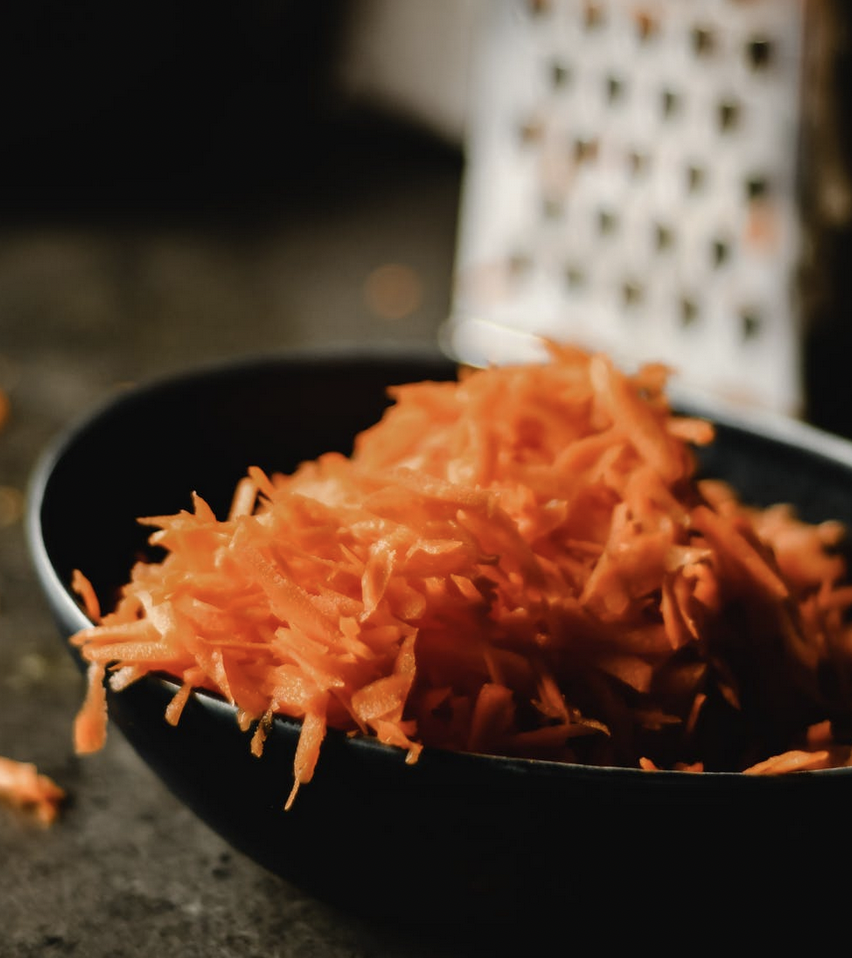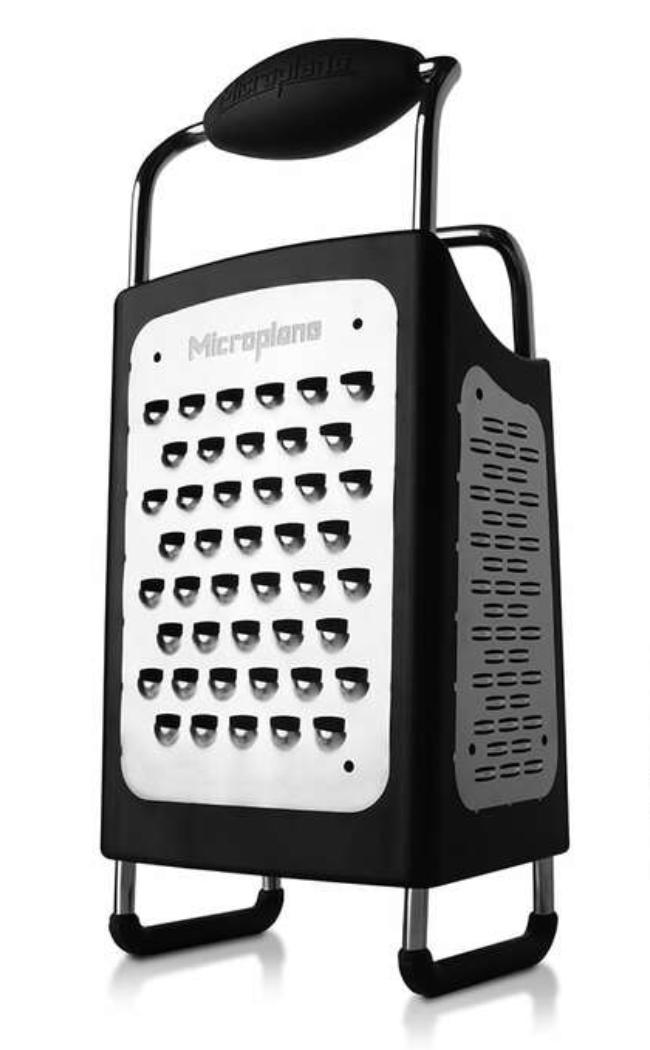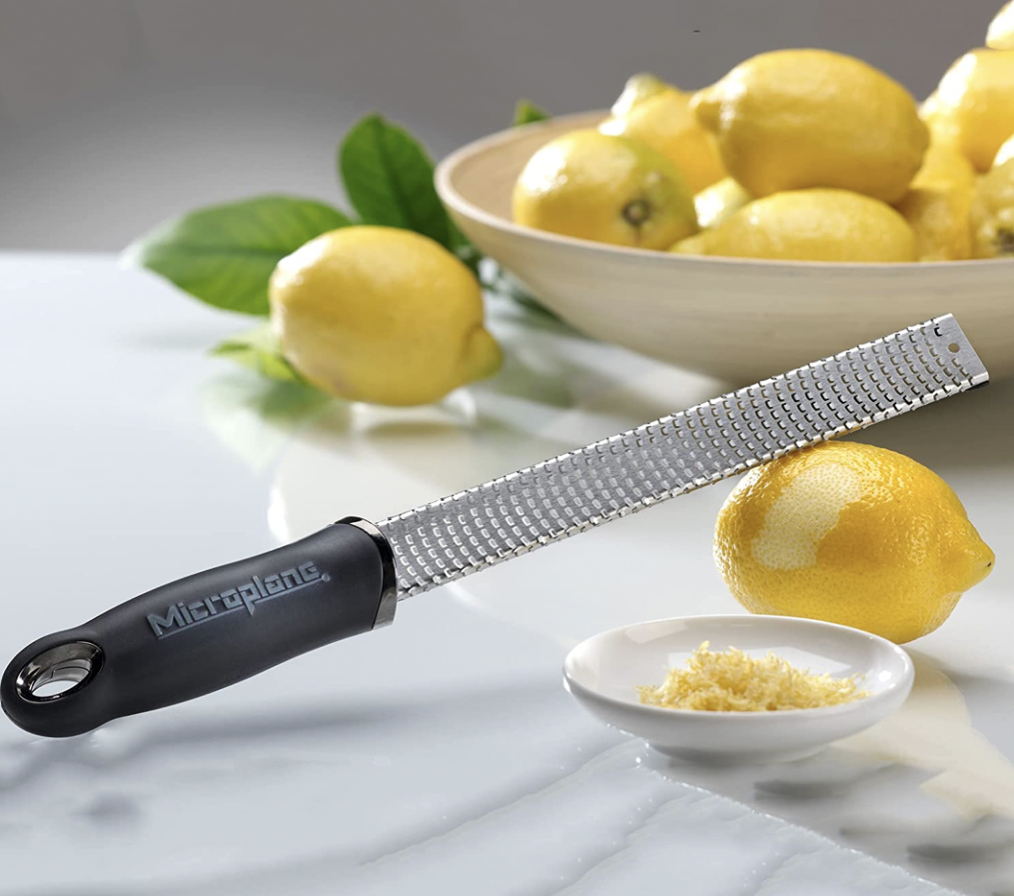Kitchen Essentials – Grater, Zester, or Both?
By Chef David
Preparation of ingredients can be time-consuming in the kitchen, selecting the correct tool can be confusing. When do you use a knife, a grater, or a zester? I have found that using the right kitchen tool can be a time saver that will improve consistency when preparing meals.
Even though you can cut everything with a knife, you wouldn’t want to. Shredding potatoes for a kugel, making riced cauliflower, or carrots for coleslaw are handled best with a grater.
A zester, on the other hand, is ideal for preparing ginger, chocolate, or lemon/lime zest, into a finely ground product that can be used in recipes such as fresh seasonings or dusted on to add finishing color touches as a flavorful garnish.
Zester versus Grater
Both the grater and zester are kitchen tools used for shredding, but this is as far as their similarity goes. Each handheld tool is specifically designed for precision based on the size of its holes.
A zester is a small instrument with small holes and ridges for a finer cut. Graters tend to be larger. They are the kitchen tool most home chefs think of for shredding potatoes or horseradish for Passover.
Many chefs opt for using a food processor in place of a grater. Useful for shredding large amounts quickly, food processors are electric, require set-up as well as clean-up, and take up valuable counter space.
For smaller quantities, a grater is usually faster and easier. Using one requires only a few minutes, and clean-up is easy.
Zesters, which are even smaller devices, store easily in a drawer.
When to Zest? When to Grate?
When finely minced ingredients, such as lemon zest or ginger, are desired, zesting is faster and easier than using a knife, especially when trace ingredients are being prepared for use in vinaigrettes or stir-fries.
Zesting is commonly associated with preparing bits of rinds from lemons, limes, or oranges used to flavor a variety of entrees, desserts, and even beverages. It is also used to prepare chocolate flakes to sprinkle over desserts, adding both color and flavor.
One trick I use is to freeze ginger and zest it whole. This allows me to have fresh ginger whenever I need it, with no risk of spoilage.
When you want a larger shred, often used with potatoes or other root vegetables for dishes like hash browns, potato pancakes, carrot salads, and kugel, a grater is probably your best bet. And you can grate onions to add flavor to recipes or grate cauliflower into cauliflower rice.
While grating of hard cheeses is popular, it is not easy to do in a kosher kitchen, because it requires a second grater.
My Go-To Kitchen Essentials
Preparing for Shabbos or Yom Tov, graters and zesters—these terrific handheld manual kitchen tools—are my go-to essentials. They allow me to add fresh tastes, and colors, especially during the hot summer months when salads and fresh produce become a mainstay.
I am especially fond of the Microplane brand for both zesters and graters. A division of Grace Manufacturing, known for creating the microplane for woodworking, Microplane recognized in the 1990s that people were using their products in the kitchen, and, thus, they adapted.
Microplane produces a broad range of kitchen products, including my favorite, the Classic Series Zester/Grater that can do it all. This tool ended the ongoing debate in cooking circles as to whether a chef needs two different tools by producing one tool that is both a grater and a zester.
Microplane Quality and Variety
For chefs who really like to grate, the company makes a traditional four-sided box-shaped tool. A free-standing unit with a variety of cutting surfaces, it is organized in a box structure, and each surface has different sized holes which allow the chef to control the thickness. One of the sides has holes that work as a zester.
Microplane makes quality products, which are consistently rated highly across industry publications. They are known for their super-sharp and well-spaced cutting surfaces, which are also sturdy and dependable. In addition to making tools that can be used for both zesting and grating, Microplane makes single-purpose tools.
Proceed with Caution
Just as knives can cut fingers, graters and zesters might look innocuous, but they can shred a chef’s knuckles. Their cutting surfaces are sharp. Avoid accidents by working slowly and using long strokes. Apply pressure on the downward stroke only; the upward stroke won’t shred anything.
When it’s time to wash the tools, clean the cutting surface in the reverse direction used for cutting; otherwise, you will be shredding your sponge. I recommend using a toothbrush to get into the cracks and crevices for a thorough cleaning. I also recommend rinsing them in hot running water immediately after use to avoid food thickening in hard-to-reach places.
I consider zesters and graters essential kitchen tools. Whether you select one or both, they give your summer fare a fresh perspective. Once I began, I continued to discover new ways to enhance existing recipes.
Summer cooking is full of fresh fruits and vegetables, and zesters are perfect for adding citrus taste or fresh nutmeg to drinks, while graters make it easy to process raw vegetables. Having the correct kitchen tools makes creativity easy.









